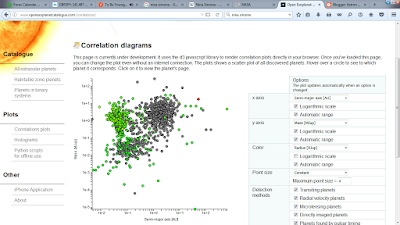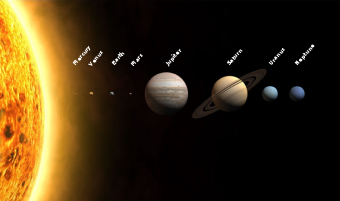The Solar System [a] is the gravitationally bound system comprising the Sun and the objects that orbit it, either directly or indirectly. [b] Of those objects that orbit the Sun directly, the largest eight are the planets , [c] with the remainder being significantly smaller objects, such as dwarf planets and small Solar System bodies . Of the objects that orbit the Sun indirectly, the moons , two are larger than the smallest planet, Mercury . [d] The Solar System formed 4.6 billion years ago from the gravitational collapse of a giant interstellar molecular cloud . The vast majority of the system's mass is in the Sun, with most of the remaining mass contained in Jupiter . The four smaller inner planets, Mercury , Venus , Earth and Mars , are terrestrial planets , being primarily composed of rock and metal. The four outer planets are giant planets , being substantially more massive than the terrestrials. The two largest, Jupiter and Saturn , are gas giants , being compose...



